
The frozen Juda ka Talab lake.
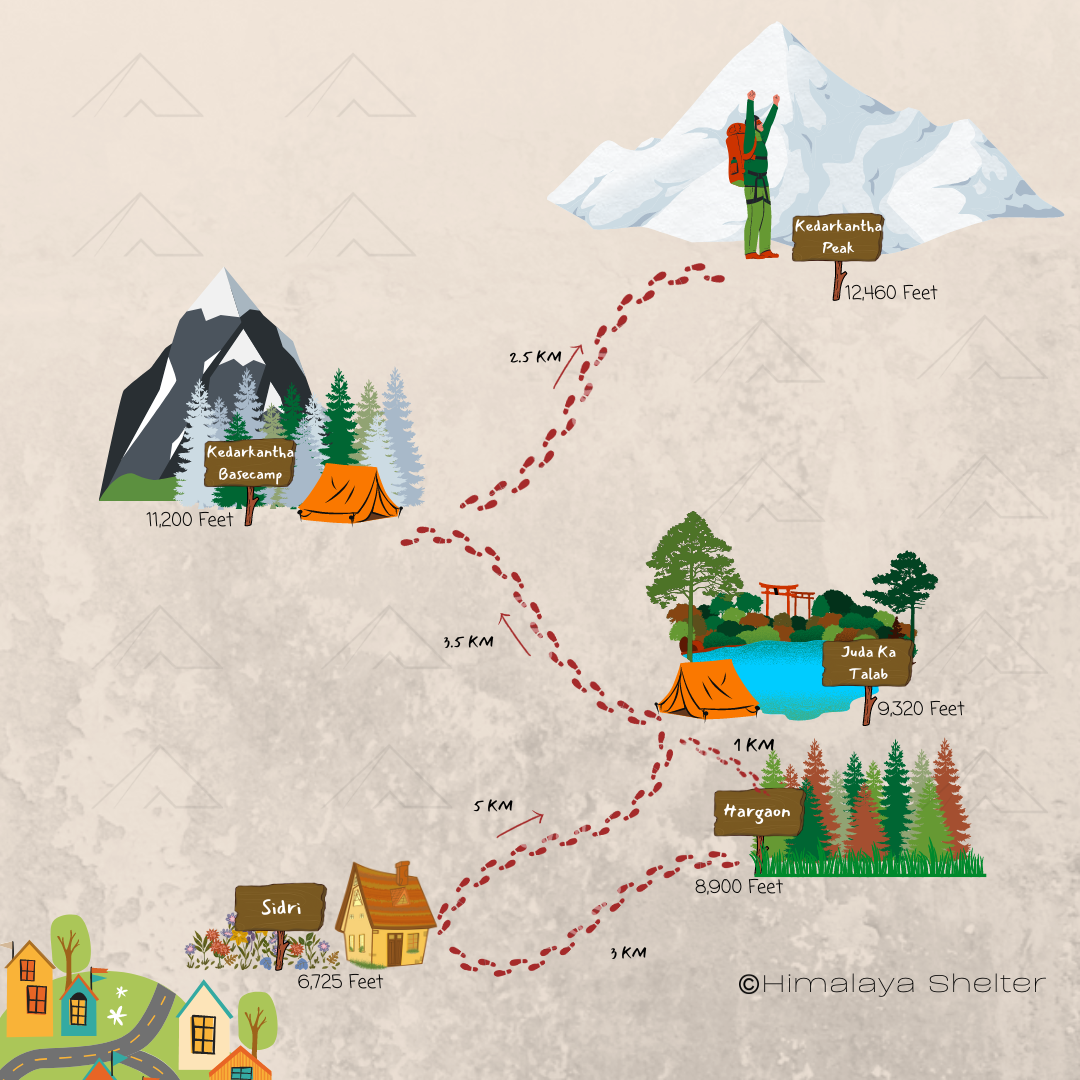
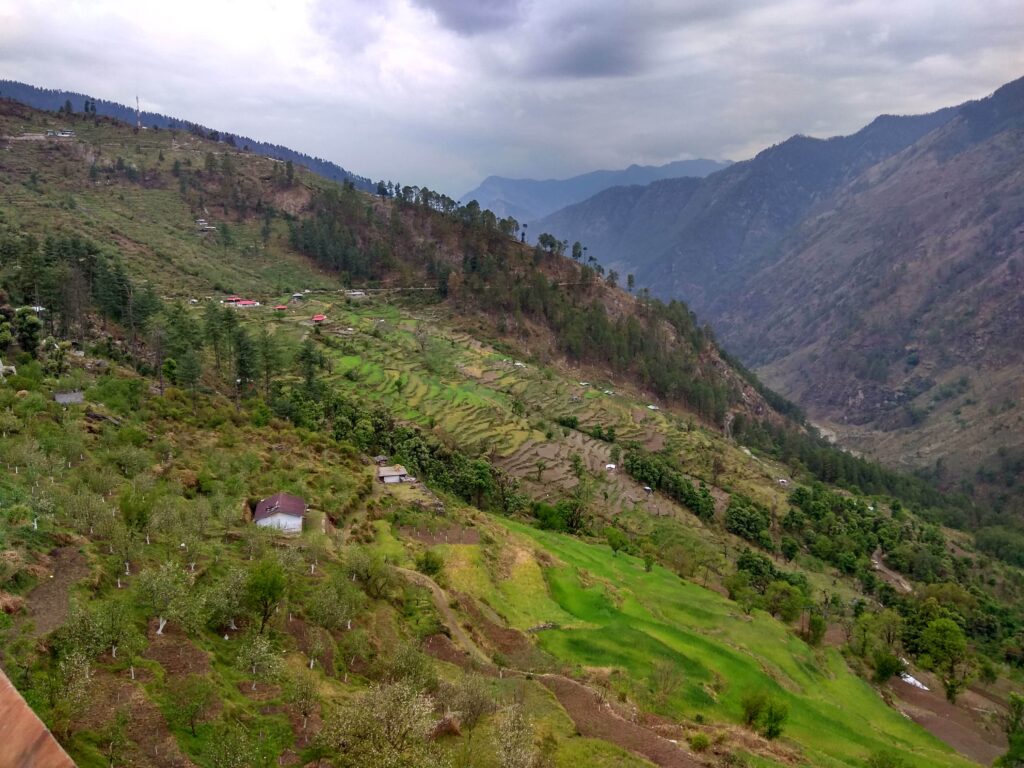
The drive from Dehradun to Sankri takes you through picturesque towns and villages like Mussoorie, Nowgaon, Purola, and Mori. The route is scenic and takes you through a dense pine forest, filling the air with the sweet aroma of pines. After driving through the forests, you’ll reach Mori, where the Tons River joins you on the route. The Tons River is the biggest tributary of Yamuna and is well-known for rafting activities. The 190 km long drive typically takes 8-9 hours to complete, so it’s advisable to start early to reach Sankri by evening. You’ll spend the night at a guesthouse before starting your hike the next day.
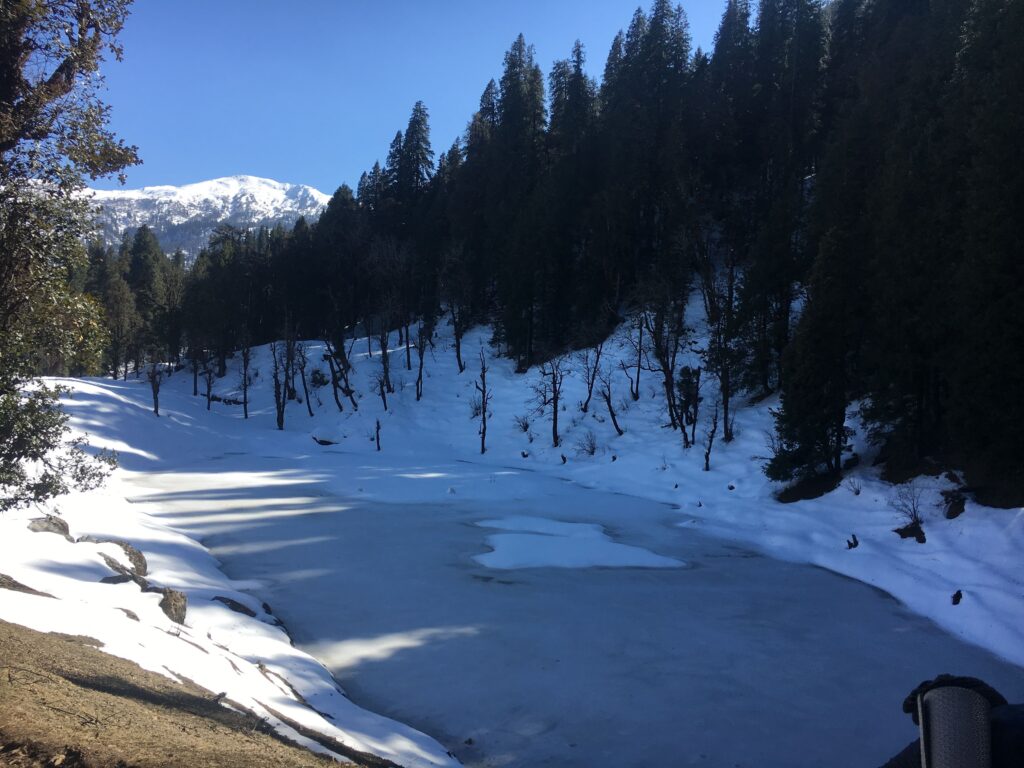
We start our trek towards Juda Ka Talab early in the morning after breakfast from Sankri. The trek is an eventful one as we pass through local villages, such as Saud, and encounter kids heading to school and women starting their daily chores. The trail takes us through a dense pine forest, which gradually steepens until we reach a ridge. After walking on the ridge for a while, the trail evens out and widens. The thick forest provides a cool environment, shielding us from the sun’s heat. Finally, we reach the famous Juda Ka Talab, a small lake adorned with three floating landmasses. We camp by the lake, savoring a starry dinner.
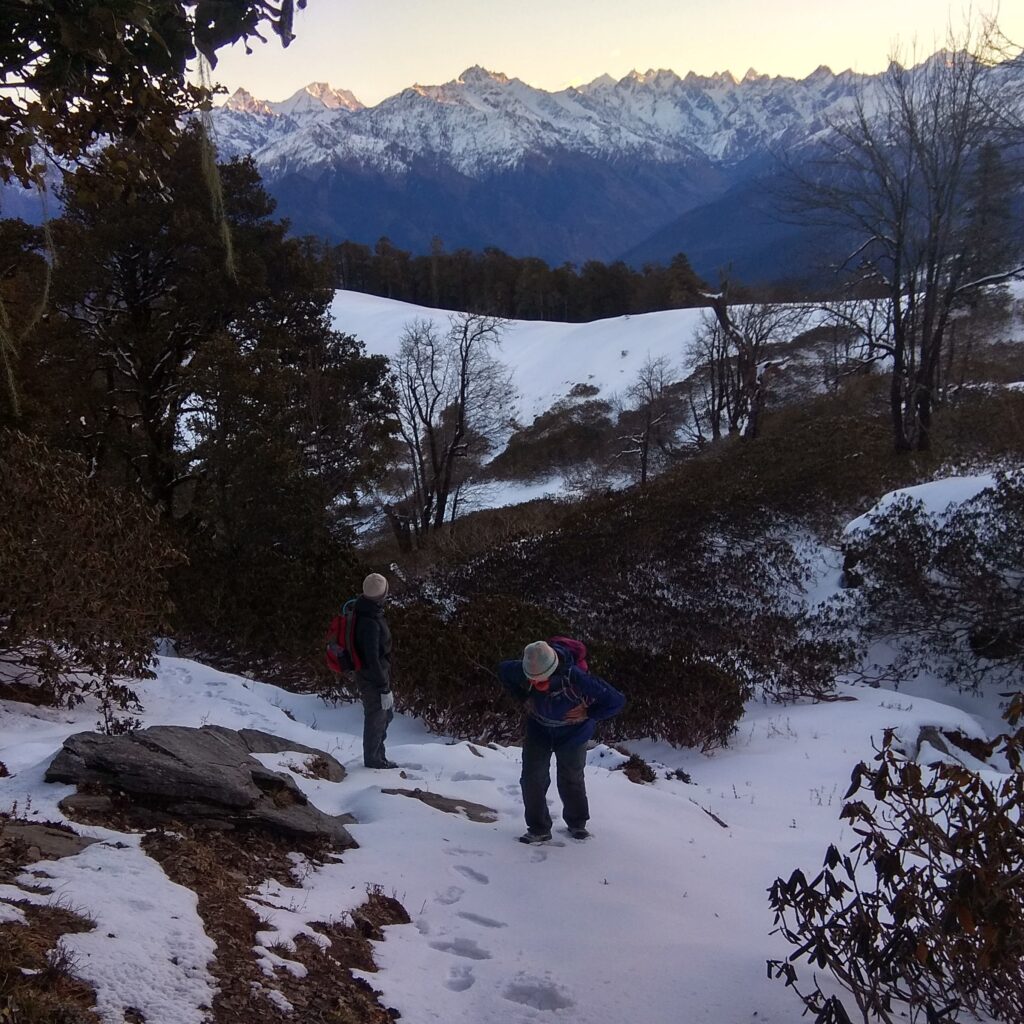
From Juda Ka Talab, the trail leads deeper into dense pine forests until reaching a meadow with shepherd’s huts. Climbing further for another thousand feet, trekkers will finally reach the Kedarkantha base camp, taking around 2-3 hours to complete. The trail from Juda Ka Talab to the base camp is incredibly stunning, providing an ideal setting for photographers and nature enthusiasts alike. Despite being a bit colder due to the lack of insulation, the base camp offers panoramic views of the famous peaks of Uttarakhand, making it an ideal spot for camping.
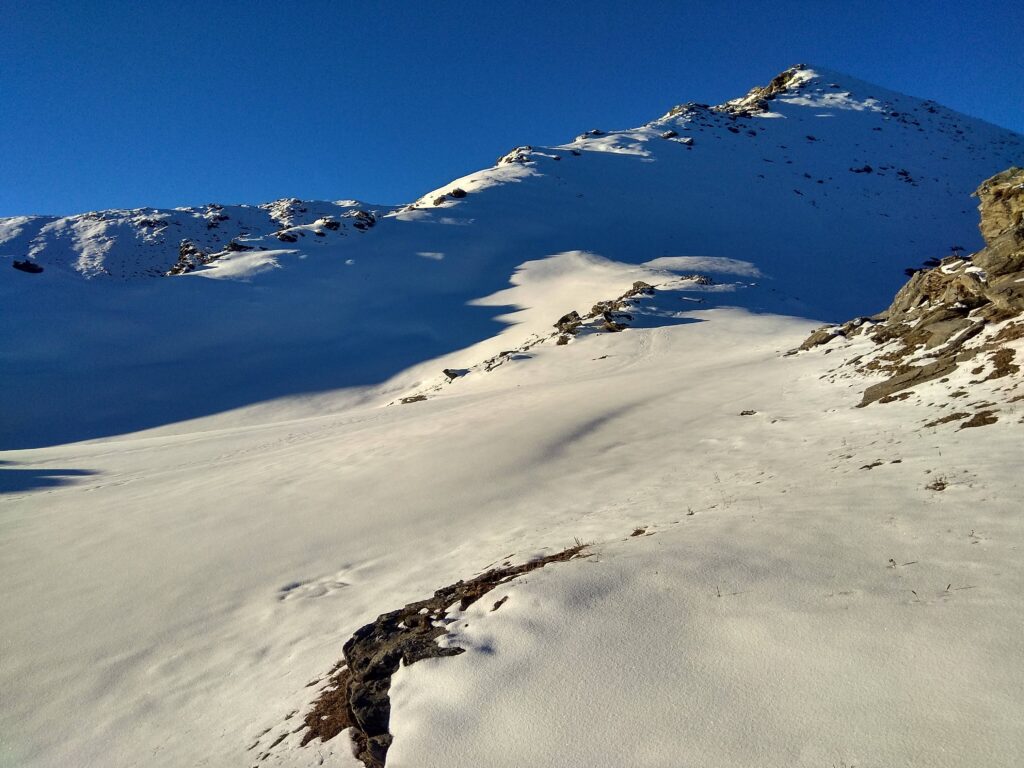
Day 4 is the day you’ve been waiting for! The trek to the summit from the base camp is not long, and upon reaching the top, you’ll be rewarded with a jaw-dropping 360-degree view of the Uttarakhand peaks, the Chaainsheel Pass, and the Kailash ranges of Himachal. You can even see the Har Ki Dun valley below. The Kedarkantha summit is marked by an arrangement of stones with a Trishul pointing to the sky. Legend has it that the peak was meant to be the original Kedarnath temple, but Lord Shiva, who was disguised as a cow hiding from the Pandavas, was disturbed during meditation by the villagers. The interruption made him change his location to the present Kedarnath temple.
After spending time on the summit, we hike back to the base camp and head towards Hargaon (2 km trail) post-lunch. Hargaon is a large camping area en route to Sankri, where we will spend the night before bidding farewell to this beautiful place.

Today is the final day of our trek and we will descend from Kedarkantha to Sankri, which is a 4 km trek taking 2-3 hours. Once we reach Sankri, you can take the rest of the day to explore the charming village and nearby villages like Gangad and Osla, which are known for their warm hospitality and traditional Pahari culture. Sankri is also the last road head to the Govind Balabh Pant Wildlife Sanctuary.

Going back home is always a bittersweet moment, but the journey is made easier by taking the same picturesque road back to Dehradun. As we leave behind the dense pine forests and descend towards the city, the landscape slowly changes and opens up into wider roads. Finally, we arrive in the bustling city, bidding farewell to the serene mountains and valleys of Uttarakhand.
 Juda Ka Talab frozen in winters
Juda Ka Talab frozen in winters
 Approaching the summit of Kedarkantha
Approaching the summit of Kedarkantha
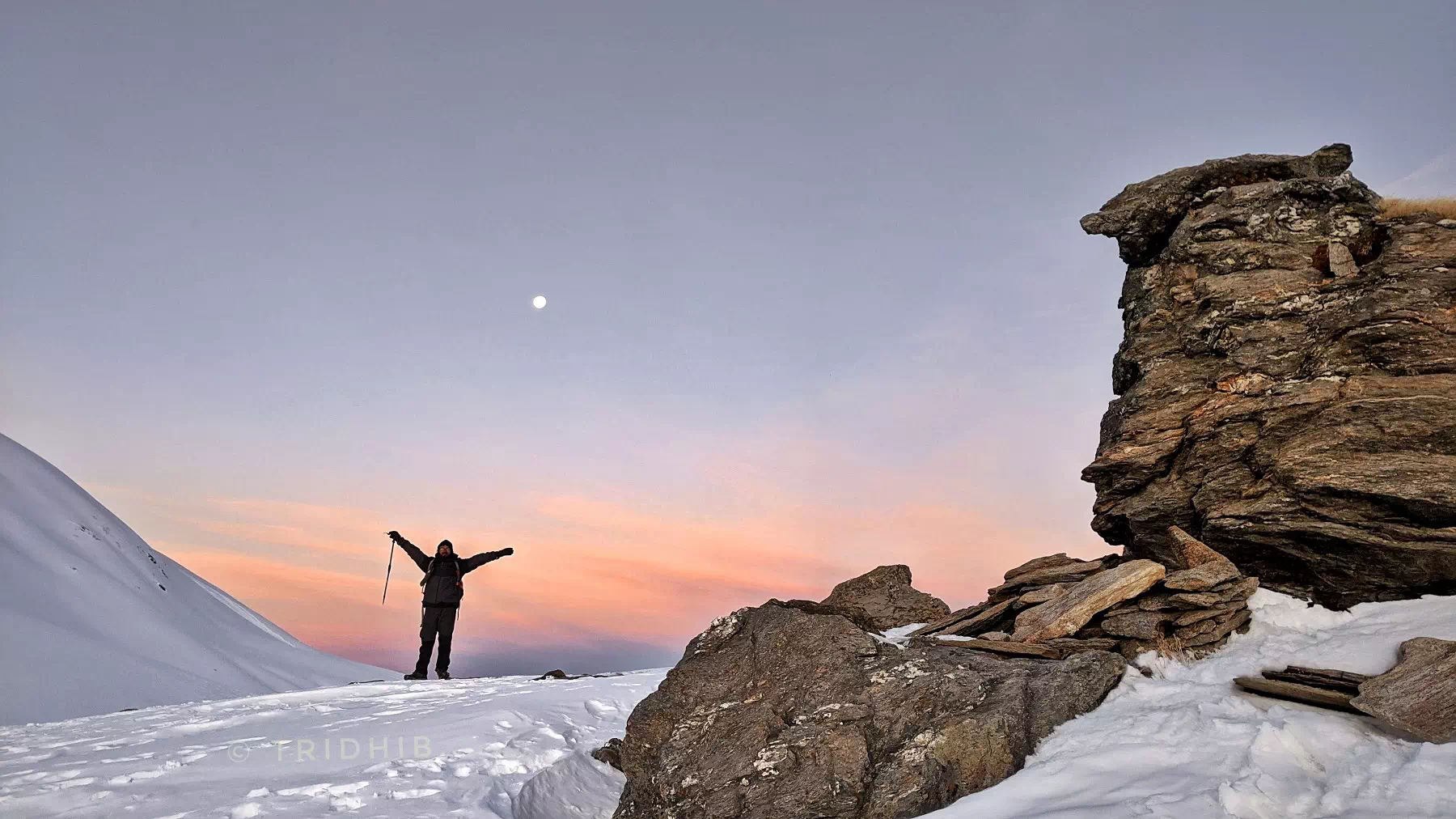 Kedarkantha Summit
Kedarkantha Summit
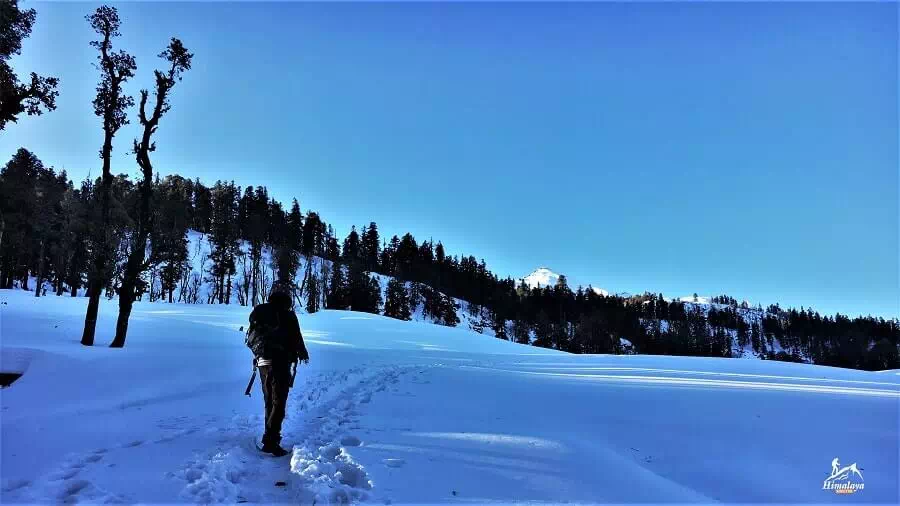 Ahead of Base camp of Kedarkantha
Ahead of Base camp of Kedarkantha
 Sankri Village
Sankri Village
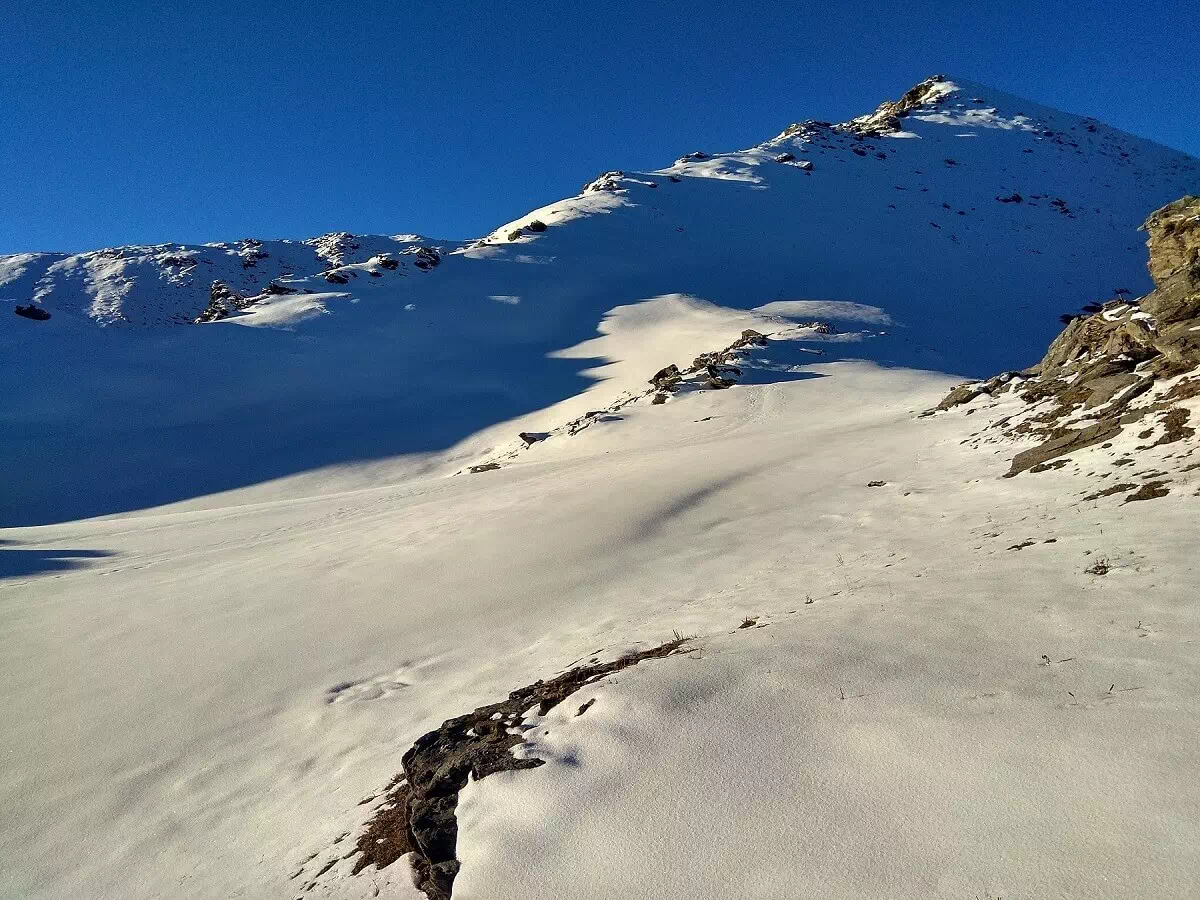 Kedarkantha Summit can be seen from the trail
Kedarkantha Summit can be seen from the trail
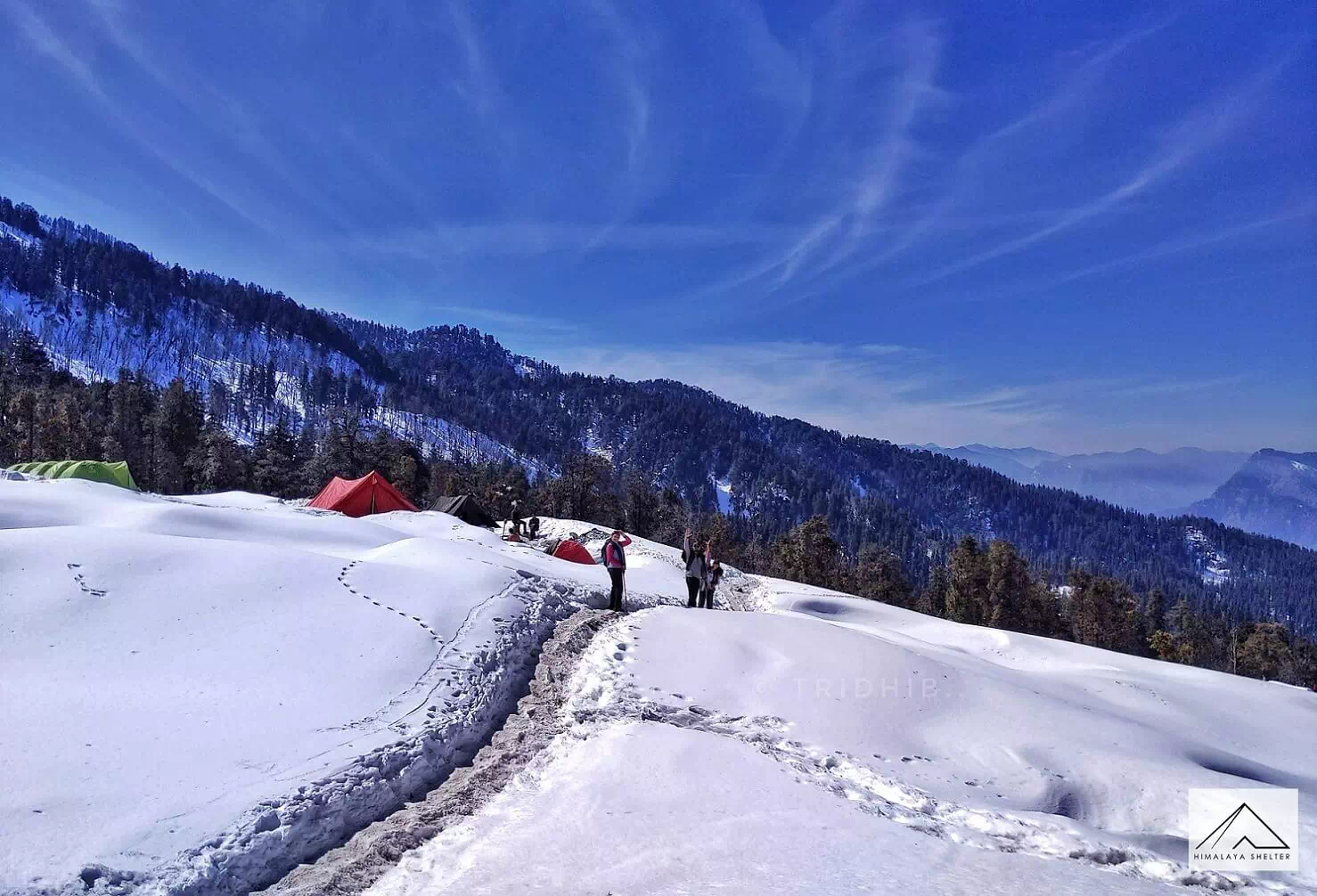 At Kedarkantha Base camp
At Kedarkantha Base camp
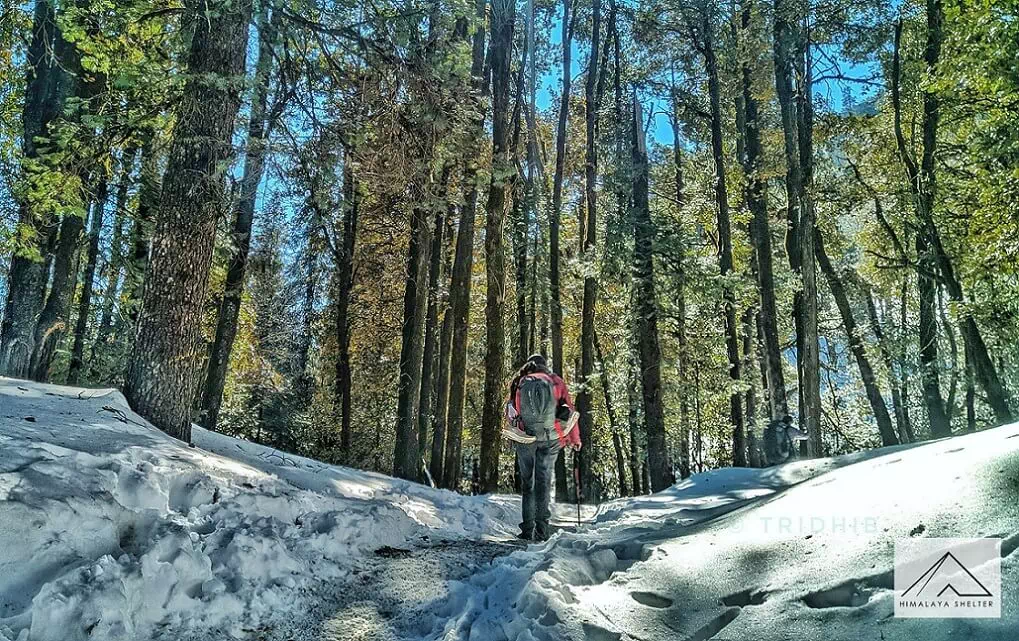 Pine trees rising tall and covered with snow ahead of Juda ka Talab
Pine trees rising tall and covered with snow ahead of Juda ka Talab
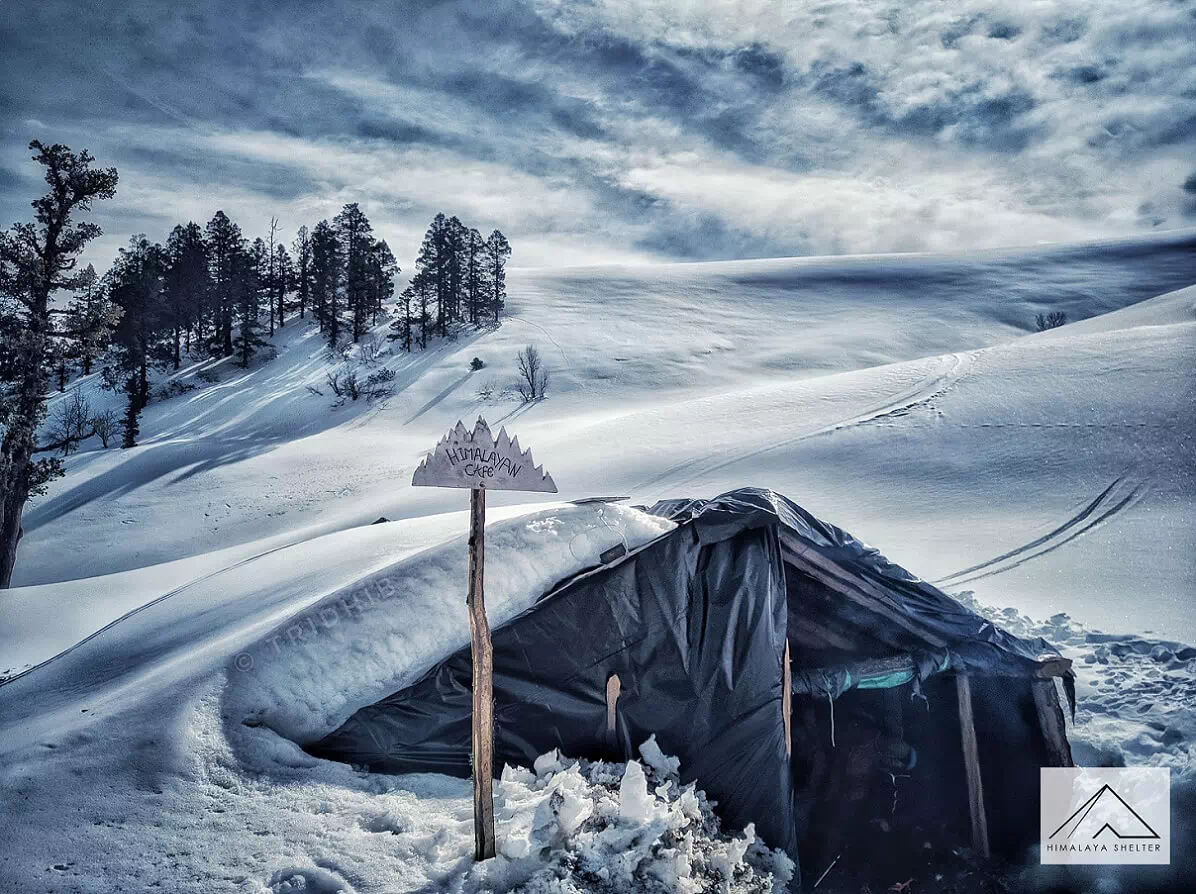 Basecamp
Basecamp
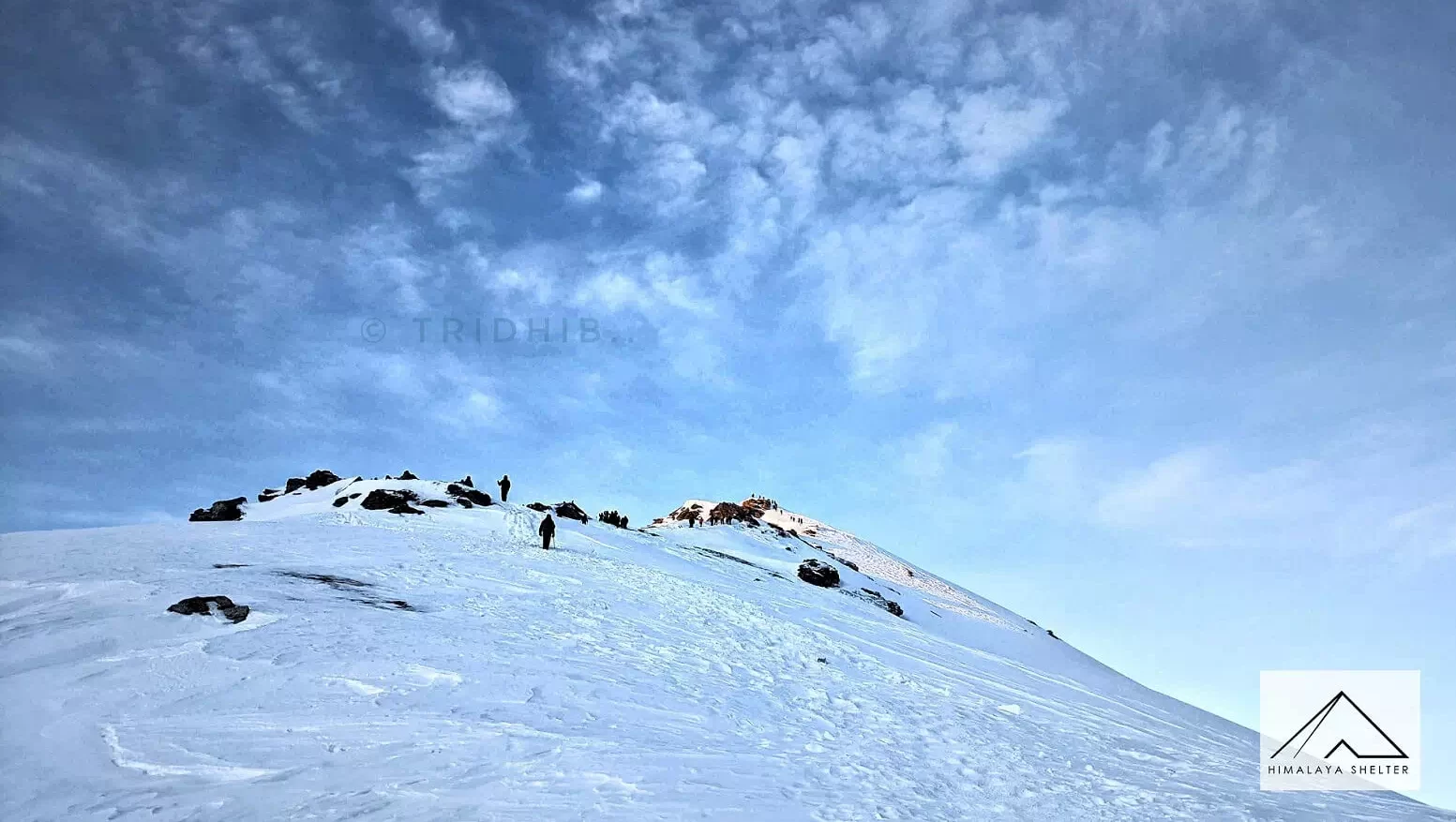 Kedarkantha Summit
Kedarkantha Summit
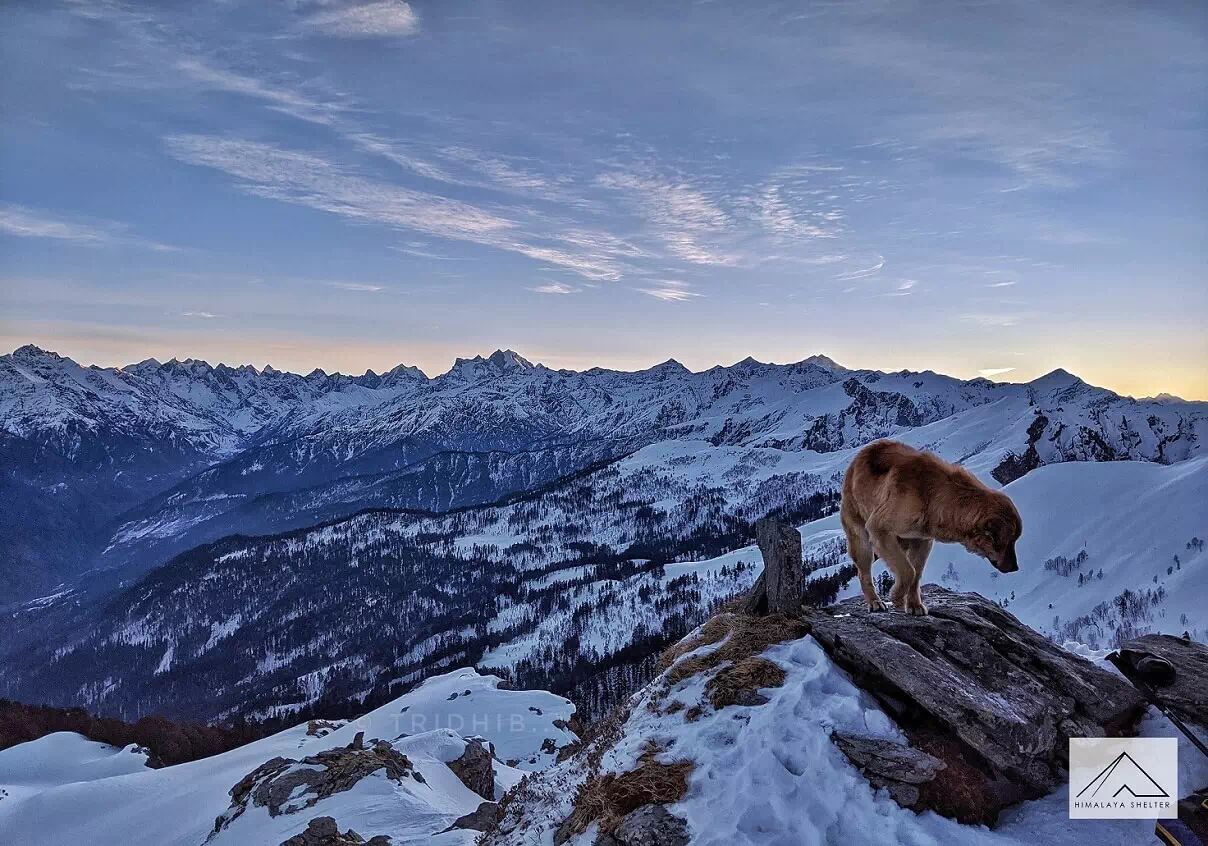 At Kedarkantha Summit
At Kedarkantha Summit
 Approaching the summit
Approaching the summit
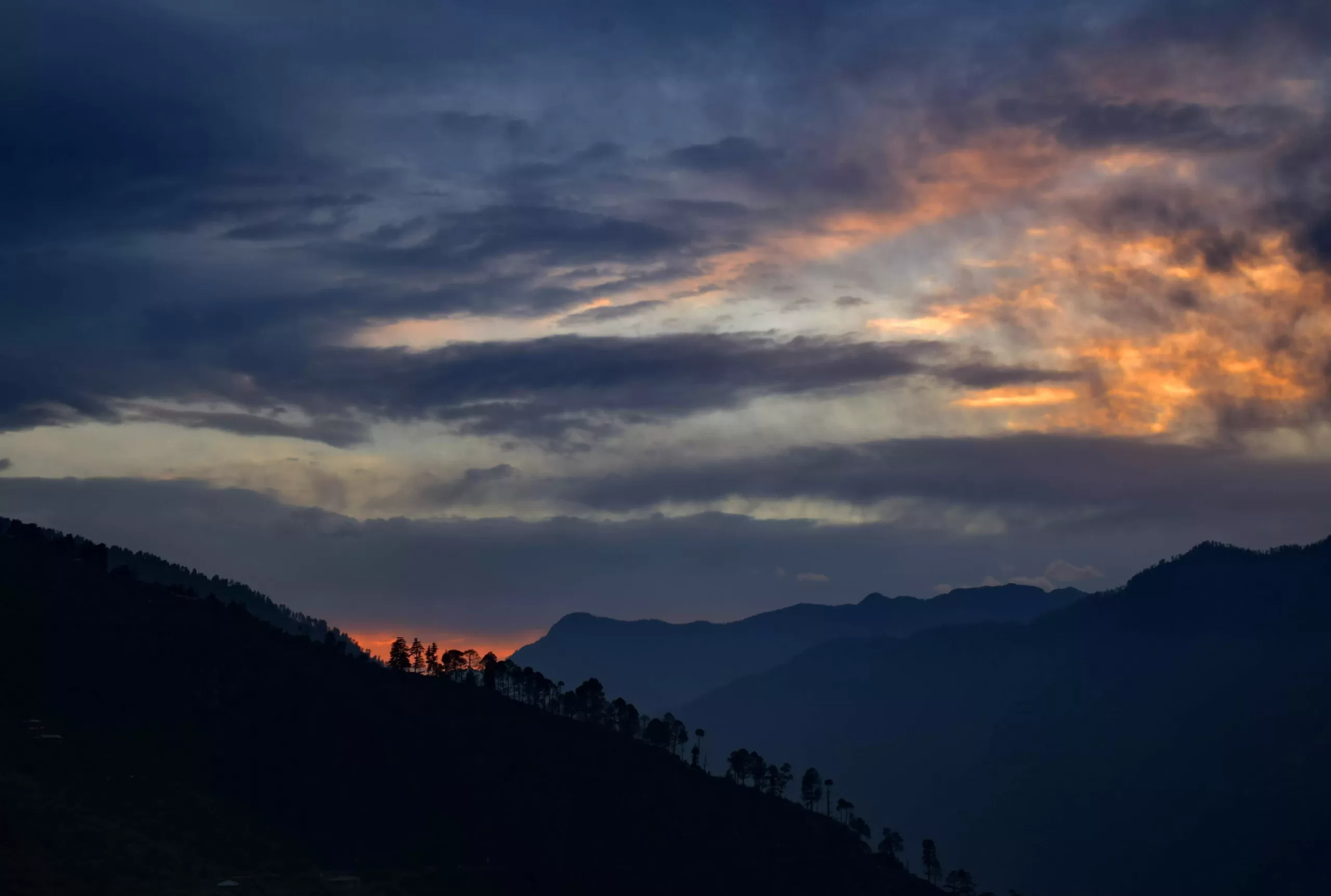 A sunset in Sankri
A sunset in Sankri
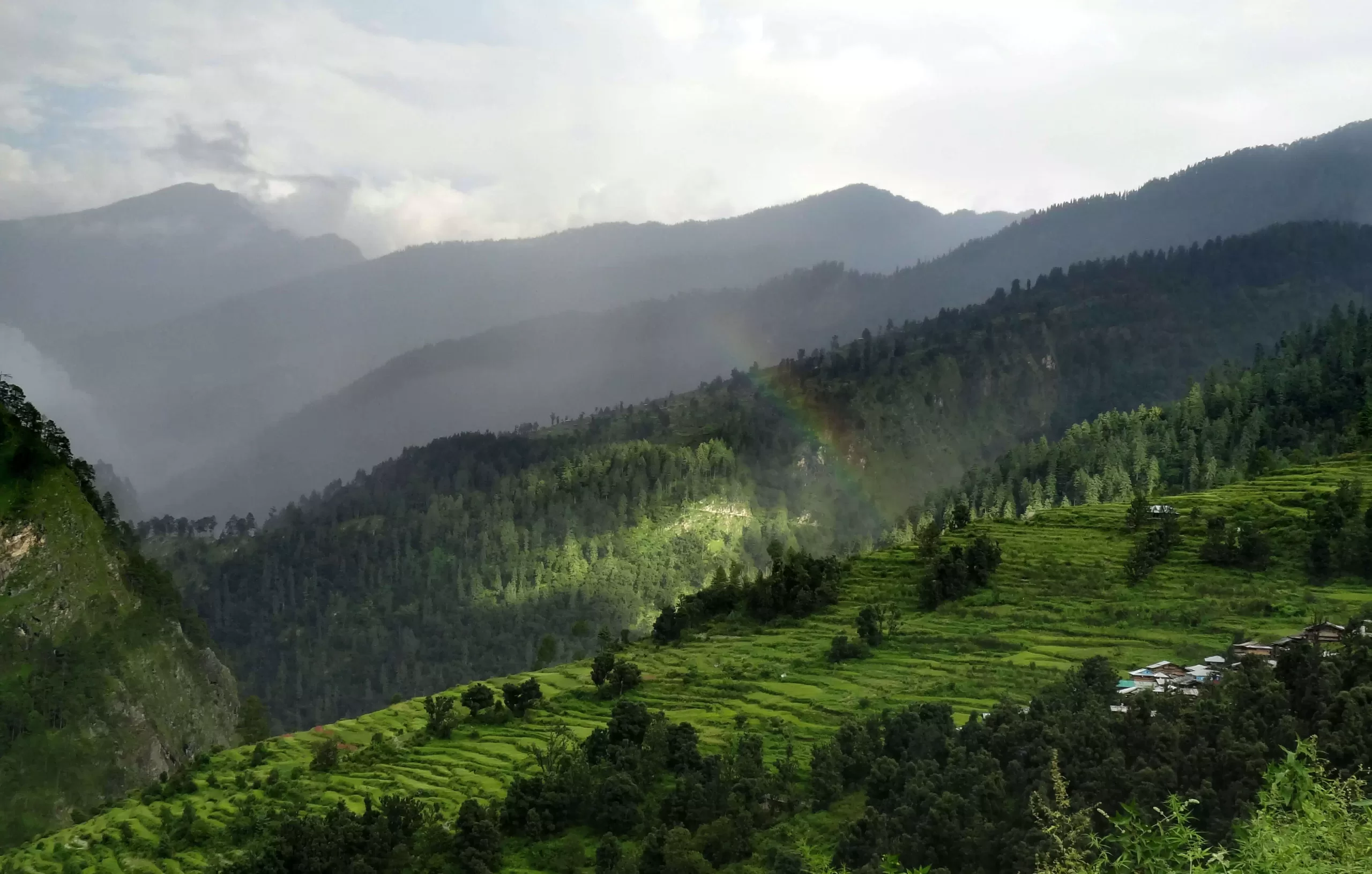 A Rainbow in Sankri
A Rainbow in Sankri
 Accomodation Sankri Guest House
Accomodation Sankri Guest House
 View From Sankri Guest House
View From Sankri Guest House
The best time to visit Kedarkantha:-
The Kedarkantha trek is feasible for most of the year, except during peak monsoon season. Although there may be temporary halts due to heavy snowfall for 2-3 days on average during late December or early January. The trek can still be attempted during the peak winter season, from December to mid-February, when the snowfall is at its highest. The Kearkantha trek best time is from January to March. The Juda Ka Talab Lake freezes over during this period, creating a surreal experience for trekkers. However, campsites can be extremely cold during this time, and the number of trekkers starts to decrease from the second week of January. For a more solitary experience, plan your trek in late January or February for less crowded trails with ongoing snowfall.
The trek is equally beautiful in the summer months of May and June, and in September when the flora is in full bloom. You can also combine the Kedarkantha trek with the Phulara Ridge trek for a unique and unforgettable experience during the summer season.
Kedarkantha Peak in Winters:-
Adequate Clothing Includes –
Equipment & Protective Clothing such as
The Kedarkantha altitude is approximately 12,460 feet above sea level.
The Kedarkantha trek is a short but steep trail, making it an easy to moderate difficulty trek. However, during winters, the trail can be challenging due to the presence of snow and sub-zero temperatures from the Juda Talab campsite onwards. Adjusting to the extreme cold can be tough for those who are not used to it. Additionally, there are certain sections of the trail with verglass formations, which can make it difficult to walk. It is highly recommended to use Micro Spikes and Trekking poles to navigate these sections.
On the other hand, the trek is easier during summers and autumn, as the trail is less steep and temperatures are pleasant. If you are looking for a unique experience, you can consider combining the Kedarkantha trek with the Phulara Ridge trek.
“I have been doing treks with Himalaya Shelter for the last two years and they are awesome people with pure humbleness.“
Writes Priyesh.
We at Himalaya Shelter consider our trekkers part of our community, a family of sorts and really understand the efforts that you put into taking that much-needed break and setting off to the mountains. Some of you may wait for months and even a year to plan out that perfect excursion. That’s why we want it to be “a perfect excursion” for you.
Our testimonials (read below) are a testament to our service-oriented mindset.
We take safety into great consideration and ensure our team is trained to handle emergency situations.
For a better experience, we provide accommodation on Twin Sharing throughout the trek. With most trekking operators you would get triple or even quad sharing accommodation.
Our Accommodation will have attached washrooms
(In Sankri on 1st and 5th Night)
Furthermore, we provide the essential safety gear for your trek –
– Crampons
– Gaiters
Without any additional charges.
We pamper you with great food which keeps you going on the trek. (On our google maps out of 300 reviews over 80 Trekkers mention great food😋)
We do not outsource services to ensure topmost quality throughout your journey. We use our own fleet of Vehicles to ferry you to the base camp and return.
Lastly, being a local operator we are direct stakeholders in the economic and social development of Uttarakhand. Employing locals and helping them progress in their lives goes hand in hand with work. Thus choosing Himalaya Shelter, is a step in helping us help locals progress by ensuring financial independence and social progress.
The trek pickup point will be near Dehradun railway station. The exact location will be shared with you prior to departure day.
The departure time remains 7 AM sharp for every group departure.
Trekkers arriving by Flight should ideally arrive 1 day in prior. The Airport (Jolly Grant) is situated at least 1 hour drive away from Dehradun Railway Station in the opposite direction. If you’re arriving by flight it is thus advised to travel a day prior due to lack of early morning flights.
Snowfall in Kedarkantha typically starts in late November or early December and continues through the winter months until February.
The Kedarkantha trek’s starting point is Sankri, a picturesque village located in the Uttarkashi district of Uttarakhand, India.
Yes, the Kedarkantha trek in January can be safe, but it also comes with certain challenges due to the winter conditions. The weather can be extremely cold and snowy, so it’s crucial to be cautious and informed before attempting the trek in January.
The Kedarkantha to Kedarnath distance is approximately 396 kilometers. This distance includes 360 km of driving and 26 km of trekking.
The lowest temperature recorded in Kedarkantha was around -12°C (10°F).
The Kedarkantha trek typically starts from the Sankri village to Juda Ka Talab. It is about 4-5 km. From Juda Ka Talab to Kedarkantha Base Camp, it is around 4-5 km. The trail leads through meadows with panoramic mountain views. Then, Kedarkantha Base Camp to Summit is roughly 6-7 km. And finally, Hargaon to Sankri is about 4-5 km. The total trek distance is approximately 20-24 km.
The Kedarkantha trek price is influenced by various factors such as the time of year, trek duration, group size, and preferences in accommodation and services. You can expect a budget between INR 6,000 and INR 12,000 per person for a 4-5 day trek.
This cost typically covers:
Opting for a group trek is an alternative approach. It’s an effective way to cut down on transportation and accommodation expenses. Furthermore, certain operators extend discounts, catering to budget-conscious travelers.
The distance from Delhi to Kedarkantha is about 433 km. It takes about 11 to 12 hours of driving from Delhi to Sankri and 10 km of trekking from Sankri to Kedarkantha Peak.
There are three ways to reach the Sankri trek from Delhi.
Kedarkantha from Delhi by Road:-
Bus: Direct buses run between Delhi and Dehradun. They depart from the central bus station in Delhi and arrive at the main depot in Dehradun. Upon reaching Dehradun, you can board another bus that will take you directly to Sankri. After arriving in Sankri, you’ll need to start a 10 km trek to reach Kedarkantha Peak, a journey that typically spans 1 to 2 days.
Kedarkantha from Delhi by Air:-
To reach Kedarkantha from Delhi by air, simply catch a direct flight from Delhi Airport to Jolly Grant Airport in Dehradun. Upon arrival at Jolly Grant Airport, you’ll find a multitude of taxi services available at the exit, ready to take you to Dehradun. From Dehradun to Sankri drive takes around 7 to 8 hrs. Upon reaching Dehradun, you can board another bus that will take you directly to Sankri. After arriving in Sankri, you’ll need to start a 10 km trek to reach Kedarkantha Peak, a journey that typically spans 1 to 2 days.
Kedarkantha from Delhi by Rail:-
By Train:-
Trains from Delhi to Dehradun-

It’s recommended to opt for the overnight Kota Express, also known as Nanda Devi Express, departing at 11:50 PM, and arriving in Dehradun at 5:45 AM, aligning with other transportation schedules from Dehradun to Sankri.

In March, the weather in Kedarkantha is quite chilly. During the day, temperatures range from about 15 to 10 degrees Celsius, while at night, it can drop to about 10 to 5 degrees Celsius. Sometimes, there might be unexpected snowfall and strong winds. However, for the most part, the sky is clear and sunny, providing stunning views of the snow-covered mountains.
The Kedarkantha summit is only about 10 km from Sankri and can be covered in approximately 6 to 7 hours. Most trekkers complete this distance of 10 km in two days, with a daily distance of 4 to 5 km.
Yes, you can go for the Kedarkantha trek in December. It’s a popular winter trek in India. From December to March, the trek is all covered in snow, making it very special.
But, it can be a bit hard, especially if you’re new to trekking. Kedarkantha weather in December might suddenly change, and there could be a lot of snow and strong winds. The paths can also be slippery.
If you’re thinking of going on this trek in December, it’s really important to be well-prepared and go with a good trekking group. Bring warm clothes, strong shoes, and other things you’ll need for trekking.
To get to Kedarkantha from Dehradun, first, you need to reach Sankri. Once you arrive in Sankri, begin the trek to Kedarkantha summit, which is approximately 10 km away from Sankri.
How to Reach Sankri from Dehradun:-
Every morning, a limited number of shared cabs and buses depart for Sankri from the vicinity of Dehradun Railway Station.
Govt. Buses and Private Buses-
Only one government bus departs from Dehradun Railway Station to Sankri at 8:00 am. Additionally, two private buses leave around 7:00 am from just outside the Dehradun Railway Station heading to Sankri town. The fare for this journey is approximately Rs. 400 per person, which is roughly the same for both the government and private buses.
Private Cab or Taxies-
You can easily locate shared taxis near Hotel Milan or Hotel Grand, merely a 2-3 minute walk from Dehradun Railway Station. These taxis operate up to Purola, which is 54 kilometers away from Sankri. The journey lasts approximately 5 to 6 hours, with a fare of Rs. 400.
From Purola, you’ll find shared cabs to take you directly to Sankri. However, it’s crucial to bear in mind that these cabs typically depart before noon. Hence, plan to reach Purola in the morning if you choose this route. The cab fare from Purola to Sankri ranges from 200 to 300 rupees. (This fare is applicable only when the taxi is full of passengers; otherwise, the cost may vary based on the number of participants.)
In case you miss the buses or taxis from Dehradun for any reason, or due to personal preference, you also have the option to book a private taxi from the same location or near Prince Chowk, approximately 100 meters away from the Railway Station. This would amount to approximately Rs. 6,000 to Rs. 7,000 for booking a Maxx or Bolero.
Shared or Private Vehicle arranged by Himalaya Shelter-
Himalaya Shelter offers both shared and private transport services directly to Sankri for trekkers. Please note that for shared vehicles, we have fixed departure dates, and it is advisable to book your seats at least a week in advance of the departure from Dehradun. We also offer pickup and drop facilities for your hotel stay in Dehradun.